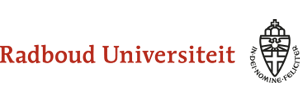American English Phonetics
Another American English Faculty Project
6.1.1 The vowel diagram
In the vowel diagram, a number of tongue and lip positions are indicated. Squares stand for unrounded vowels, and circles for rounded ones. The idea is that you try and develop some awareness of these tongue-lip postures by going through these positions.
First, notice that for all vowels, the tongue tip is held behind the lower teeth, while the body of the tongue is bunched. This bunch can vary in a vertical dimension, for which four steps are recognized: close, half-close, half-open, and open. The term mid is also used, to refer to the area from half-open to half-close.
Horizontally, the bunch can go from front to back, with central being used as an in-between value.
Say short versions of the AN vowels /i/ (as in iets), /e./ (as in eer), /ɛ/ (as in ets) and /a./ (as in Aad) quickly after each other and feel how your jaw is lowered four times going from [i] through [ɛ] and [e] to [a]. If you find it difficult to feel these steps you should ‘mouth’ the vowels without making any sound so that you can concentrate better on what your tongue and jaw are doing. Now do the same with the AN vowels /u/ (as in Oek), /o./ (as in oor), /ɔː/ (as in katastrofe) and /ɑ/ (as in ach). You have now produced the same steps, but this time with the back of the tongue instead of with the front of the tongue.
In addition to feeling what the tongue and jaw are doing, notice how the position of the lips changes from rounded in [u], [o] and [ɔ] to unrounded in [ɑ].
